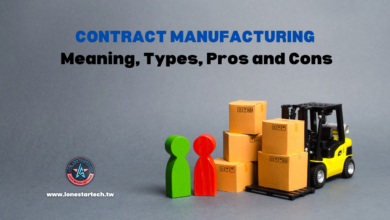Signage Strategies for Shops, Events, and Worksites

In today’s competitive environment, effective signage is more than just a wayfinding tool; it is a powerful medium for communication that can significantly influence customer behavior and perceptions. Whether in retail shops, during events, or at worksites, strategic signage plays a crucial role in guiding, informing, and engaging stakeholders.
This blog will explore comprehensive signage strategies tailored for shops, events, and worksites, providing actionable insights to enhance visibility and improve engagement.
Understanding the Importance of Signage
Signage serves multiple purposes across different environments:
– Brand Awareness: High-quality signs from HelloPrint enhances brand recognition and leaves a lasting impression on customers.
– Communication: Signage informs customers about products, services, and important information relevant to their experience.
– Navigation: Effective signage helps customers and visitors navigate complex environments easily.
– Safety: In worksites, appropriate signage promotes safety protocols and ensures compliance with regulations.
Statistics reveal that well-placed signage can increase sales by up to 20%, making it an essential component of any marketing strategy.
Types of Signage
Understanding the various types of signage is critical to creating an effective strategy tailored to specific environments.
Indoor Signage
Indoor signage primarily focuses on guiding customers within a space, enhancing the shopping experience through:
– Directional signs (e.g., “Restrooms”, “Customer Service”)
– Informational signs (e.g., product descriptions)
– Promotional displays (e.g., sales or special offers)
Outdoor Signage
Outdoor signage must withstand the elements while attracting foot traffic. Key types include:
– Storefront signs (e.g., illuminated signs)
– Banners and flags (ideal for promotions)
– Directional signs (to guide potential customers)
Event Signage
Events require dynamic and flexible signage solutions to communicate essential information effectively:
– Welcome banners
– Wayfinding signs directing attendees to key locations
– Informational booths providing schedules and maps
Key Elements of Effective Signage
To ensure your signage stands out and serves its purpose effectively, focus on these key elements:
Visibility
Your signage should be easily visible from a distance and under various lighting conditions. Consider the following:
– Use contrasting colors to enhance visibility
– Ensure adequate size; larger fonts are easier to read from afar
– Avoid cluttered designs that can confuse viewers
Clarity and Readability
Effective messaging is straightforward and easy to understand:
– Limit the amount of text; concise messages resonate better
– Use clear fonts; sans-serif fonts are often more legible
– Incorporate visuals where appropriate to illustrate concepts quickly
Branding Consistency
Your signage should reflect your brand identity consistently to foster recognition:
– Use brand colors, logos, and fonts uniformly across all signs
– Align messaging with your overall marketing strategy for coherence
Material Choices for Different Environments
Selecting the right materials for your signage is critical based on its intended location:
Indoor Materials
For indoor environments, consider materials like:
– Foam boards for lightweight displays
– Acrylic signs for a professional aesthetic
– Fabric banners for versatility in design
Outdoor Materials
Outdoor signage needs durability against weather conditions:
– Vinyl banners for flexibility
– Metal signs for longevity
– Rigid plastic for corrosion resistance
Event Materials
Temporary event signage should be portable yet impactful:
– Corrugated plastic for lightweight options
– Vinyl banners that can be easily rolled up
– Retractable banner stands for ease of transport
Location and Placement Strategies
The effectiveness of your signage heavily relies on its placement. Consider these strategies:
1. High Traffic Areas: Position signs where they will be seen by the most people.
2. Eye-Level Placement: Signs should be at eye level to maximize visibility.
3. Clear Lines of Sight: Ensure no obstructions block your signs from view.
4. Consider Flow: Place directional signs along pathways where foot traffic naturally moves.
Engaging Your Audience with Interactive Signage
Incorporating interactive elements into your signage can significantly enhance engagement levels:
– QR Codes: Direct customers to websites or promotions when scanned.
– Digital Displays: Use screens that update dynamically based on inventory or promotions.
– Augmented Reality (AR): Create immersive experiences that blend digital content with physical signs.
Interactive features not only capture attention but also offer additional layers of information that static signs cannot provide.
Measuring the Success of Your Signage Strategy
To assess the effectiveness of your signage efforts, employ various metrics such as:
1. Foot Traffic Analysis: Monitor changes in customer visits before and after implementing new signage.
2. Sales Data Correlation: Evaluate if increased sales correspond with specific promotional signs.
3. Surveys and Feedback: Gather qualitative data from customers regarding their experiences with your signage.
Utilizing tools like heat maps can also provide insights into how customers interact with different areas within a shop or event space.
Case Studies: Successful Signage Implementations
Examining real-world examples can provide valuable insight into effective strategies:
Retail Example: IKEA
IKEA utilizes extensive indoor wayfinding systems featuring clear icons and color-coded sections to help customers navigate their vast store layouts effectively. This strategic use of indoor signage has led to improved customer satisfaction scores.
Event Example: Comic-Con
At Comic-Con events, organizers deploy vibrant banners alongside large directional maps distributed at entry points, ensuring attendees know where they are going at all times. This approach enhances attendee experience by reducing confusion in crowded venues.
Future Trends in Signage
As technology advances, so too does the world of signage:
– Smart Signage: Digital displays equipped with sensors that adapt content based on viewer demographics.
– Sustainability: Eco-friendly materials gaining traction as consumers prioritize green practices.
– Personalization: Tailoring messages based on customer data gathered through loyalty programs or previous interactions.
Embracing these trends can keep your business ahead of competitors while catering to evolving customer expectations.
Engaging strategies that incorporate effective design principles can ensure your business maximizes its potential through well-executed signage solutions tailored to shops, events, and worksites alike.



